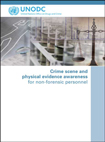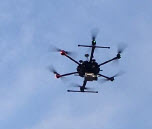|
View in browser: https://www.crime-scene-investigator.net/newsletter/0322.html
|
||
|
MARCH 2022 | ||
|
Welcome to the March 2022 Crime Scene Investigator Network Newsletter
| ||
|
This Month's Featured Resource on the Crime Scene Investigator Network Website
|
||

Crime scene and physical evidence awareness for non-forensic personnel United Nations Office on Drugs and Crime The primary target audience of the manual is non-forensic personnel, i.e. first responders and any person involved in the crime scene investigation process without full-fledged training, to help them understand the importance of their actions and the consequences of not applying basic principles of good practice. The manual also targets policy makers, the judiciary and others having to assess, and/or base decisions on evidence presented to them. |
New CSI and Forensic Job Announcements
|
|
|
The most comprehensive listing of Crime Scene Investigation and Forensic To be notified of job openings as they are posted, follow us on Twitter: Job Posting Alerts |
||
|
Crime Scene Technician
Salt Lake City Police Department, Salt Lake City, Utah, USA Final Filing Date: March 27, 2022 provides crime scene processing and evidence collection for the police department. Conducts physical processing of evidence recovered from crime scenes, particularly in the areas of fingerprints and DNA collection. May also perform 3-D laser scanning of crime scenes, recovery of evidentiary video, and function as a field training officer for new Technicians. <View complete job listing> |
||
|
Property and Evidence Technician
San Luis Police Department, San Luis, Arizona, USA Final Filing Date: April 1, 2022 Responds to calls for service of crime scene processing as directed by the CID supervisor or detectives. Receives, packages, documents, and stores evidence or found items submitted by police officers. <View complete job listing> |
||
|
Identification Technician
Billings Police Department, Billings, Montana, USA Final Filing Date: April 4, 2022 Responsible for analyzing, identifying and comparing latent fingerprints with rolled impression prints both manually and with computer technology such as ABIS/AFIS and/or other national databases. May also be needed to assist with the processing of crime scenes as directed by the Identification Supervisor. <View complete job listing> |
||
|
Crime Scene Investigator I or II
Farmington Police Department, Farmington, New Mexico, USA Final Filing Date: Open until filled Responds to crime and accident scenes, evaluates the scene and conducts searches for evidence utilizing disciplines related to crime scene investigation. Measures and/or photographs crime scenes, evidence, etc. Documents, collects, packages, preserve, and processes evidence. Processes evidence and crime scenes for latent fingerprints, <View complete job listing> |
||
 |
||
|
Senior Forensic Scientist - Biology/DNA
Forensic Analytical Crime Lab, Hayward, California, USA Final Filing Date: Open until filled Annual salary up to $120,000 depending on experience. We will also offer a generous signing bonus and/or assistance with relocation. FACL provides a full suite of employee benefits, including medical, dental, vision, 401k, and college loan assistance. <View complete job listing> |
||
|
Criminalist
Fort Collins Police Department, Fort Collins, Colorado, USA Final Filing Date: April 17, 2022 Digital forensic examinations on various digital devices and media. Recognition, identification, documentation, forensic collection and analysis of digital evidence in criminal investigations. Examine crime scenes to discover, identify, preserve, collect, photograph and document digital and physical evidence. <View complete job listing> |
||
|
Forensic Scientist 1 (Biology Section)
West Virginia State Police, South Charleston, West Virginia, USA Final Filing Date: Continuous 4 entry level positions available. Develops an understanding of discipline and lab-related protocols and procedures. Learns methodology in performing critical analysis of evidence in criminal cases. Conducts basic examinations of suspected evidence such as biological materials, <View complete job listing> |
||
|
Latent Print Examiner
Cumberland County Sheriff's Office, Fayetteville, North Carolina, USA Final Filing Date: April 1, 2022 The primary purpose of the latent print examiner is to examine, evaluate and compare developed crime scene finger, palm and sole prints against known impressions either on hard copy impression cards or by searching through an automated identification system. <View complete job listing> |
||
|
Search for more job listings in Crime Scene Investigations and Forensics To be notified of job openings as they are posted, follow us on Twitter: Job Posting Alerts |
||
|
Other Resources on the Crime Scene Investigator Network Website
|
||
|
Not Subscribed to this Newsletter?
|
||
|
If you are not subscribed to this newsletter, you may subscribe with this link: SUBSCRIBE via email |
||
|
To Unsubscribe
|
||
|
To unsubscribe from future e-mail alerts, please click here: UNSUBSCRIBE Copyright ©2022 Crime Scene Resources, Inc. Crime Scene Investigator Network |



